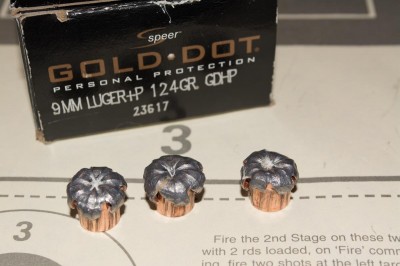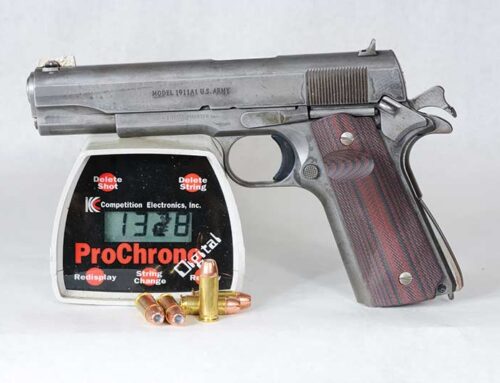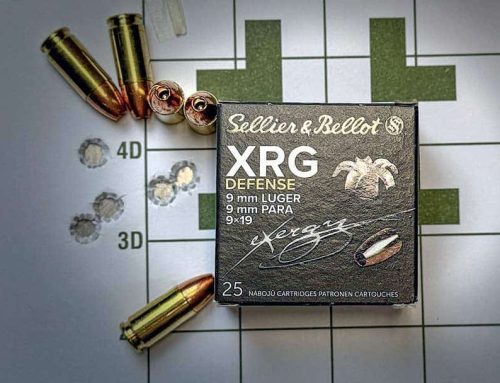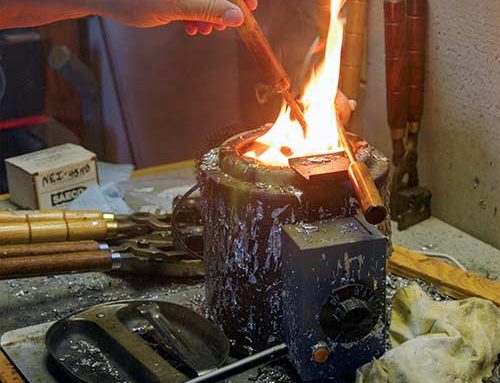
Once you get away from controlled gelatin testing scenarios, fired bullets tend to look more like this.
Do you want the good news or the bad news?
The good news is that there are more than five great 9mm defensive ammo choices. The bad news is that there are more than five great ammunition choices.
So what to choose? That depends. If you look around on Youtube, you’ll see lots of ammunition tests performed in carefully controlled scenarios. That’s absolutely the best way to look at relative differences between different types of ammunition under, you guessed it, carefully controlled circumstances. That’s how law enforcement organizations do it – by necessity. How else could you really compare one ammo type to another without factoring out all possible variables between every test shot?
Without going into too much detail on the process, these tests explore penetration into carefully calibrated ballistic gelatin. They also look at expansion performance and penetration when a piece of standardized denim fabric is placed in front of the gelatin block. Law enforcement tests go further and bring things like windshield barriers into the equation, but we won’t go there since this is about personal self-defense requirements.
Back to the good news. Most of the results from these tests, when quality ammunition is used, are excellent. Most modern bullets penetrate more than 12 inches. Most expand in pure gelatin, and when passing through light denim barriers. Most tests end with perfectly expanded projectiles. That’s great, and should give you confidence that it’s hard to go wrong with quality ammunition.
Here’s the problem. Real life isn’t carefully controlled. Projectiles you fire in a self-defense scenario won’t hit a carefully calibrated gelatin target square on after passing through a (very) lightweight layer of denim fabric. They might. Or they might have to deal with things like multiple clothing layers, winter coats, leather jackets, bones, and who knows what else. And that’s where you start to see real differences in ammunition performance. You’ll start to see jacketed designs that held together so beautifully in the controlled tests start to come apart. Many of the bullets that expand beautifully in gel may not expand at all passing through thicker and more realistic clothing barriers. In short, things get random when exposed to real-world conditions, because, unlike a lab, the real world is messy.
This list is not a ranking of the five 9mm ammunition types that performed “best” under controlled scenarios. It’s a little more subjective, and based on results I observed when shooting through all sorts of tough barriers like multiple layers of clothing, leather, and heavier jacket denim.
1. Barnes TAC-XP Projectiles

I have yet to find a 9mm load using the Barnes TAC-XP bullets that doesn’t perform well.
OK, I cheated a little on this one because I picked a specific projectile rather than a loaded cartridge. I did this because I continue to be impressed with the performance of the Barnes all copper solid projectiles. The expand reliably, penetrate most any reasonable barrier and rarely, if ever, come apart. These are loaded in different configurations from different ammunition providers. Doubletap Ammunition uses the Barnes TAC-XP in its 80 grain standard pressure 9mm offering. Low recoil and uber velocity make it a great option for compact 9mm pistols. I tested a Buffalo Bore +P+ 95 grain load and shot it through leather boots into gelatin. Even after passing through thick leather, the projectiles expanded perfectly. And now, Barnes is loading their own cartridges using the TAC-XP.
2. Speer Gold Dot +P 124 grain

Speer’s Gold Dot +P 124 grain bonded bullets.
Bonded bullets tend to perform really well in random circumstances. While they can break apart, they’re far less likely to do so than jacketed designs. Bonded and jacketed alike work great in standardized gel tests, but when bullets start hitting hard things, bonded do a much better job of staying together, improving the odds of proper penetration.
In my own velocity testing, I’ve found these 124 grain rounds to consistently surpass the 1,200 feet per second barrier. Measured speeds from a Glock 17 Gen 4, Beretta 92FS, and Sig Sauer P226 were 1,231, 1,209 and 1,223 feet per second respectively. Tough barrier expansion performance? Absolutely. After getting bored with the performance through numerous layers of fabric, I tried all sorts of tough materials like paper, wood, multiple layers of leather and more. This load consistently outperformed everything else tested.
I have to give Winchester an honorable mention in this section for their PDX1 +P 124 grain offering. It’s a bonded design like the Speer Gold Dot and performs nearly as well through a variety of barrier types. I’ve measured its average velocity from a number of full-size handguns in the 1,220 feet per second range.








I have watched hundreds of ammo test touting the end of results into gel. In most the results is the same for quality ammo. But like you say it is not always like real life. I have only seen one or two tested though dry wall. Most ant good ammo will work in a face to face encounter but I wanted something that would just as well in my home. If I have to shoot through a wall during home invasion I would like to see it expand on striking the invader. I tested several through two sheets of dry wall, into gallon jugs of water, and the penetration was unbelievable. Might as well have used my .308. Why isn’t this info more available?
What type of ammo did you test through drywall just out of curiosity?